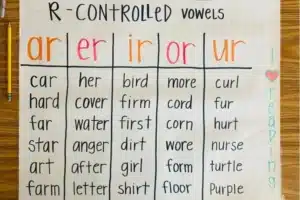
Source: wrightslaw
What is Dyslexia and Dysgraphia Difference has to be understood by trainees who wish to establish a strong foothold in the field of Learning Disabilities. Dyslexia and Dysgraphia are quite co-related so knowing the exact difference between them is a must. Mutual characteristics of dyslexia comprise difficulties in identifying words, slow reading rapidity, and trouble with words. On the other hand, dysgraphia upsets a person’s writing capabilities. Those with dysgraphia may fight with unclear, uneven handwriting and find it difficult to put their opinions on paper rationally.
The difference between the two learning problems is critical, as it monitors the required help and interventions. What is Dyslexia and Dysgraphia Difference? This query is not just about problem-solving contrasting features; it’s about comprehending two different areas of learning problems. While dyslexia disturbs the domain of reading and language handling, dysgraphia openly affects writing skills. Identifying what is Dyslexia and Dysgraphia Difference benefits in creating targeted approaches that can efficiently assist persons in overwhelming their unique tests.
In Dysgraphia Handwriting is Impacted?
In the intricate landscape of learning differences, dyslexia and dysgraphia often emerge as challenging companions. While dyslexia predominantly affects reading and language processing, dysgraphia specifically targets an individual’s writing abilities. Let’s delve into how dysgraphia handwriting is distinct and demanding.
Understanding Dysgraphia Handwriting
Dysgraphia writing is a hallmark of this learning disorder. It’s not merely about untidy or illegible writing; it’s a deeper struggle that manifests in various ways:
Physical Pain and Discomfort
Many persons with dysgraphia knowledge physical anxiety or pain while writing. This is not just a representational expression of their fight but a visible physical reality. Dysgraphia handwriting is often accompanied by a tight grip on the writing device, leading to contractions and exhaustion.
Irregular and Inconsistent Letters
Dysgraphia handwriting is considered by unevenly shaped alphabets. The sizing and arrangement of alphabets are unpredictable, making the writing appear untidy and hard to read.
Slow Writing Pace
Those with dysgraphia usually write at a prominently slower speed. This is not due to an absence of exertion or skill but is a characteristic part of the dysgraphia handwriting procedure. The time and attentiveness essential to form each alphabet can be demanding.
Different Types of Dysgraphia and Their Impact on Handwriting
Dysgraphia is not a suitable condition; it offerings in numerous forms, each impacting dysgraphia writing otherwise.
Motor Dysgraphia
This kind arises from poor motor expertise, upsetting the physical act of writing. It hints to dysgraphia writing that is usually unreadable and physically draining to produce.
Dyslexic Dysgraphia
In this kind, linked closely with dyslexia, impulsive written work is often obscured, whereas copied work may be stronger. Dysgraphia handwriting in this case replicates the language-handling struggles inherent in dyslexia.
Spatial Dysgraphia
This includes a difficulty in understanding space, affecting the placement of words on a page. Dysgraphia handwriting here tends to be poorly aligned and spaced.
Dysgraphia handwriting is a multifaceted challenge that requires understanding and specialized support. Teachers and parents must identify these signs and seek suitable interventions. As we circumnavigate the difficulties of dyslexia & dysgraphia, comprehending the shades of dysgraphia handwriting is a step towards offering effective help and help for those affected.
To know more about the Learning Difficulties Course, Call / Whatsapp at +919321024137 / +919869866277.
Click Here, for downloading the Learning Difficulties Course brochure!

Source: guim
Is Dyslexia and Writing Related?
Comprehending the association between dyslexia & writing is critical for miserly the difficulties faced by persons with this condition. Dyslexia, mainly known for disturbing reading skills, also expressively impacts writing capacities. This association is usually ignored but is an energetic feature of the fights encountered by those with dyslexia.
What is Dyslexia?
- Dyslexia is a learning disorder that arises due to some neurological issues in which a child’s learning skills especially the letter recognition skills get affected due to which his academic progress is greatly hampered.
How Dyslexia Impacts Writing
- Dyslexia affects how a child reads. And since the letter recognition skills are very poor the child struggles with these writing skills as well.
Individuals with dyslexia often struggle with:
- Spelling inaccuracies: Trouble remembering and sequencing letters in words.
- Organizing thoughts: Difficulty in structuring sentences and narratives coherently.
- Handwriting struggles: Dysgraphia is known to co-exist with dyslexia which hampers a child’s writing skills too.
Dyslexia and Writing: The Overlooked Challenge
- The focus on dyslexia and writing is less prominent than on reading difficulties, yet it is equally important.
- Understanding dyslexia & writing helps in developing targeted teaching strategies.
- It’s vital to recognize that dyslexia & writing difficulties can coexist, requiring a unique approach to support.
The association between dyslexia & writing is an important aspect of the encounters faced by individual with dyslexia. By comprehending this link, teachers and parents can better help individuals in overcoming these difficulties. Remember, dyslexia & writing are two sides of the same coin, affecting an individual’s capability to communicate efficiently.
To know more about the Learning Difficulties Course, Call / Whatsapp on +919321024137 / +919869866277.
Click Here, for downloading the Learning Difficulties Course brochure!

Source: brightspotcdn
Are there Learning Disabilities Training Courses available?
Are you looking for a chance to comprehend and help individuals with learning disabilities like dyslexia & dysgraphia? Vidhyanidhi Education Society (Govt. regd.) provides particular learning disabilities training programs custom-made to prepare you with needed skills and information.
Here’s a closer look at the benefits of these courses:
Widely Accepted Certification across the Globe!
Upon achievement, you’ll receive a guarantee documented universal, opening doors to global chances. This qualifications is especially helpful for those working with persons with dyslexia & dysgraphia.
Learner Friendly courses
The LD Courses launched at VES have been curated keeping in mind the hectic schedules of the trainees which helps them to pursue them at a pace that is convenient for them maintaining a perfect balance of personal and professional commitments.
Only MCQ Based Online Assessment
The assessment process is streamlined with Multiple Choice Questions (MCQs). This format makes it less daunting and more accessible, particularly for those new to learning disabilities training.
Provision for Reference Letter for Internship
To enhance your practical experience, a reference letter for internship opportunities is provided. This is particularly useful for hands-on learning about conditions like dyslexia & dysgraphia.
Affordable Fees and Simple Course Content
We believe education should be accessible. Therefore, our courses are priced affordably, and the content is easy to understand, ensuring no one is left behind in learning about dyslexia & dysgraphia.
Course Developed and Reviewed by Licensed Practitioners
The learning disabilities training courses are curated and constantly updated by licensed professionals. This ensures you receive the most current and practical information, particularly regarding dyslexia & dysgraphia.
Guidance by best professionals
The faculty at VES consists of maestros in the field of Early Childhood Education with abundance of valuable insights into the complex aspects of dyslexia & dysgraphia.
Non-mention of the ONLINE MODE OF STUDY
The certificate of the LD Course does not mention the mode of study as online which makes this course as authentic as a regular mode.
Undergoing the Learning Disabilities Courses from a trusted platform of Vidhyanidhi Education Society will always provide an elaborate understanding of Dyslexia and Dysgraphia enabling trainees to grasp all the aspects clearly which reflects in the way of work and talent they display while handling challenges faced by children with LD’s efficiently.
Unlock dyslexia & dysgraphia secrets with Vidhyanidhi Education Society’s course!
To know more about the Learning Difficulties Course, Call / Whatsapp on +919321024137 / +919869866277.
Click Here, for downloading the Learning Difficulties Course brochure!
What is Dyslexia and Dysgraphia difference?
FAQs
What is an Example of Dysgraphia?
Dysgraphia example: Struggling to form letters, uneven spacing, and slow, painful writing.
Can a Child with Dysgraphia Read?
Yes, a child with dysgraphia can read. Dysgraphia affects writing, not reading abilities.
How does Dyslexia Affect a Person?
Dyslexia impacts reading and language processing, leading to difficulties in reading fluently and decoding words.



